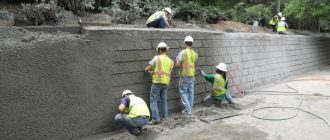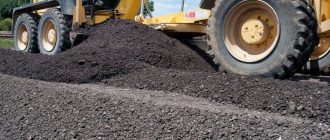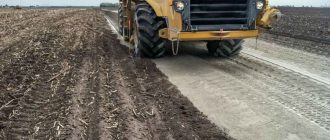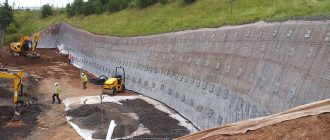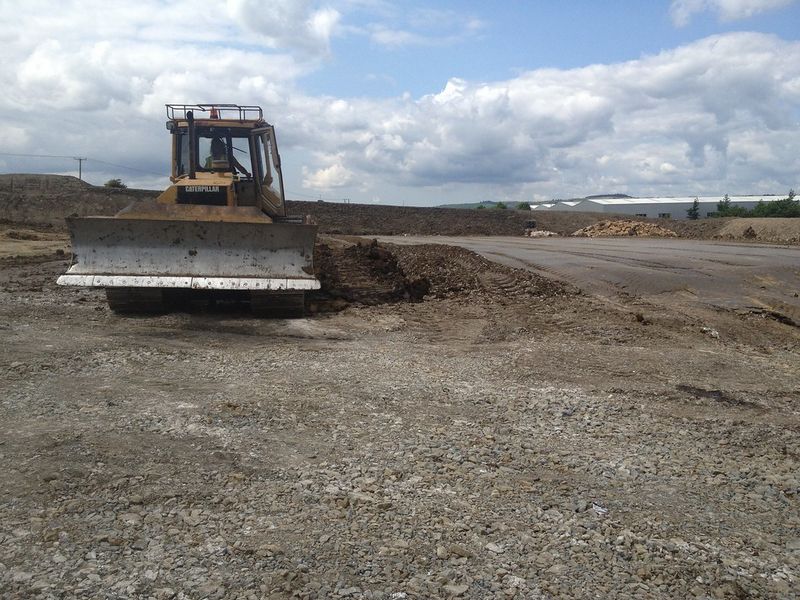
The Significance of Lime Stabilization pH and Its Role in Construction Projects
Lime stabilization pH refers to the measurement of acidity or alkalinity in soil that has undergone lime stabilization. Lime stabilization is a process in which lime is added to soil to improve its engineering properties, such as stability, strength, and durability.
The pH level of lime-stabilized soil plays a crucial role in determining its effectiveness and performance. pH is a measure of the concentration of hydrogen ions in a solution and is expressed on a logarithmic scale from 0 to 14. A pH value of 7 is considered neutral, values below 7 are acidic, and values above 7 are alkaline. In lime stabilization, the desired pH range is typically between 10 and 12.
The importance of maintaining the appropriate pH level in lime-stabilized soil cannot be overstated. The pH level affects various chemical and physical processes, including the activation of lime, the formation of stable soil aggregates, and the control of harmful substances. A pH level that is too low or too high can lead to inadequate stabilization, resulting in poor engineering properties and potential environmental issues.
“The pH level affects various chemical and physical processes, including the activation of lime, the formation of stable soil aggregates, and the control of harmful substances.”
Monitoring and controlling the pH level during lime stabilization is essential to ensure the desired outcomes. This can be achieved through regular testing and adjustment of lime dosage. Lime stabilization pH testing can be conducted using various methods, such as pH meters or pH indicator solutions.
Lime stabilization pH is a critical factor in determining the effectiveness and performance of lime-stabilized soil. Maintaining the appropriate pH level within the desired range is crucial for achieving optimal engineering properties and avoiding potential issues. Regular pH testing and adjustment are necessary to ensure successful lime stabilization.
Understanding Lime Stabilization pH
When it comes to lime stabilization, one of the most important factors to consider is pH. pH is a measure of the acidity or alkalinity of a substance, and it plays a crucial role in the effectiveness of lime stabilization.
The pH level of the soil or material being stabilized using lime is important because it affects the chemical reactions that occur during the stabilization process. Lime works by reacting with the soil particles to create a stable and durable material. However, the effectiveness of this reaction is highly dependent on the pH level.
If the pH level of the material being stabilized is too low or too high, it can negatively impact the lime stabilization process. If the pH is too low, the lime may not react effectively with the soil particles, resulting in a weaker stabilization. On the other hand, if the pH is too high, it can lead to excessive lime consumption, which can be both costly and environmentally unfriendly.
Therefore, it is crucial to carefully monitor and adjust the pH level during lime stabilization. The optimal pH range for lime stabilization is typically between 9 and 12. Within this range, the lime can react efficiently with the soil particles, resulting in a stable and durable material.
There are several methods for adjusting the pH level during lime stabilization. One common method is to add hydrated lime, also known as slaked lime or calcium hydroxide, to the material being stabilized. Hydrated lime has a high pH level and can effectively raise the pH of the material.
Another method is to mix the material with water and allow it to hydrate for a certain period. This hydration process can help raise the pH level and promote efficient lime stabilization.
In conclusion, understanding lime stabilization pH is crucial for achieving successful and effective stabilization. By carefully monitoring and adjusting the pH level within the optimal range, lime stabilization can result in a stable and durable material that meets the desired engineering properties.
What Is Lime Stabilization pH?
Lime stabilization pH refers to the measurement of the acidity or alkalinity of a soil treated with lime stabilization. Lime stabilization is a process that involves the addition of lime to soil in order to improve its engineering properties. The pH level of the soil plays a crucial role in determining how effective the lime stabilization process will be.
A pH value below 7 indicates acidity, while a pH value above 7 indicates alkalinity. The ideal pH range for lime stabilization is typically between 8 and 12. At this pH range, lime reacts with the soil particles and forms chemical compounds that bind the soil particles together, increasing its strength and stability.
The lime stabilization pH level is important because it influences various factors such as the rate of lime reaction, the amount of lime required, and the final strength of the stabilized soil. If the pH level is too low, the lime may not react fully with the soil, resulting in poor stabilization. On the other hand, if the pH level is too high, excessive lime may be required, leading to unnecessary costs.
Monitoring and adjusting the lime stabilization pH level is critical to ensure the successful implementation of lime stabilization. This can be done through laboratory testing or field testing using pH meters or litmus paper. By maintaining the optimal pH range, engineers and contractors can achieve the desired improvements in soil strength and stability, making lime stabilization an effective solution for various construction and engineering projects.
Importance of pH in Lime Stabilization
In lime stabilization, pH plays a crucial role in the overall effectiveness of the process. pH, which stands for “potential of hydrogen,” is a measure of the acidity or alkalinity of a substance. In lime stabilization, maintaining the proper pH is essential for achieving the desired results.
One of the main reasons why pH is important in lime stabilization is its effect on the solubility of lime. Lime, also known as calcium hydroxide, is commonly used in the stabilization process to improve the properties of soil or other materials. However, lime is only soluble within a certain pH range. If the pH is too low or too high, the lime will not dissolve effectively, leading to incomplete stabilization.
Another reason why pH is important in lime stabilization is its impact on the chemical reactions that occur during the process. Lime stabilization involves the formation of calcium silicates and calcium aluminates, which help bind the soil particles together and improve its strength and stability. These reactions are pH-dependent, meaning that the pH of the system directly affects their rate and extent. Therefore, maintaining the proper pH is crucial for promoting the desired chemical reactions and achieving the desired stabilization results.
Furthermore, pH also affects the microbial activity in lime stabilization. Certain microorganisms, such as bacteria and fungi, play a role in the stabilization process by breaking down organic matter and contributing to the formation of stable aggregates. The activity of these microorganisms is influenced by the pH of the system. Maintaining the right pH range can promote the growth and activity of beneficial microorganisms, enhancing the overall effectiveness of lime stabilization.
pH is of utmost importance in lime stabilization. It affects the solubility of lime, the rates and extents of chemical reactions, and the activity of microorganisms involved in the process. By maintaining the proper pH, lime stabilization can be optimized, leading to improved soil properties and enhanced stability.
Determining Lime Content from pH Tests
One of the most common methods used to determine lime content in soil is through pH testing. pH testing involves measuring the acidity or alkalinity of a substance on a scale of 0 to 14, with 7 being neutral. Lime, also known as calcium hydroxide, is an alkaline substance that increases the pH level of soil.
To determine the lime content in soil using pH tests, a sample of the soil is collected and mixed with distilled water. The pH of the resulting solution is then measured using a pH meter or pH indicator paper. The pH value obtained can give an indication of the amount of lime present in the soil.
In general, a higher pH value indicates a higher lime content in the soil. However, it is important to note that pH tests alone may not provide an accurate measurement of lime content. Other factors such as the type of lime used, soil composition, and moisture content can also affect the pH value.
It is recommended to consult a soil testing laboratory for a more comprehensive analysis of lime content in soil. These laboratories can provide detailed information on the lime requirements for specific crops and suggest appropriate lime application rates.
| pH Value | Lime Content |
|---|---|
| Less than 6 | Low lime content |
| 6 to 7.5 | Medium lime content |
| Greater than 7.5 | High lime content |
By accurately determining the lime content in soil, farmers and agricultural professionals can make informed decisions regarding lime application and soil management practices. This can help optimize crop growth and yield, as well as prevent nutrient deficiencies and soil acidification.
How Is Lime Content Determined from pH Tests?
The lime content in soil can be determined through pH tests. pH is a measure of the acidity or alkalinity of a substance, and lime affects the pH level of soil. Lime is commonly added to soil as a stabilizing agent to improve its properties.
To determine the lime content in soil, a pH test is conducted. This test involves taking soil samples from different locations and measuring their pH levels using a pH meter or pH paper. The pH meter or paper indicates the acidity or alkalinity of the soil on a scale of 0 to 14, with 7 being neutral.
If the pH level of the soil is below 7, it indicates that the soil is acidic. Lime is added to acidic soil to raise its pH level and make it more neutral. The lime content in the soil can be determined by measuring the amount of lime needed to bring the pH level to a desired range.
On the other hand, if the pH level of the soil is above 7, it indicates that the soil is alkaline. In this case, the lime content can be determined by measuring the amount of lime needed to lower the pH level to a desired range.
It is important to determine the lime content in soil accurately to ensure the proper amount of lime is added for soil stabilization. The pH test provides a reliable method to determine the lime content and make necessary adjustments accordingly.
Equipment Used to Measure pH of Lime-Stabilized Soil
Measuring the pH of lime-stabilized soil is crucial in determining the effectiveness of lime stabilization. Several equipment and instruments are commonly used for this purpose:
pH Meter: A pH meter is a device used to measure the acidity or alkalinity of a solution. It consists of a probe that is inserted into the soil sample, and the pH value is displayed on the meter. pH meters are commonly used in laboratories and field settings for accurate pH measurements.
pH Test Strips: pH test strips are simple and inexpensive tools used to measure the pH of a solution. These strips contain pH-sensitive dyes that change color when exposed to different pH levels. By comparing the color of the strip to a color chart, the pH value can be approximated. pH test strips are commonly used for quick and qualitative pH measurements in the field.
pH Indicator Solution: pH indicator solutions are liquid solutions that change color depending on the pH of the solution being tested. These solutions typically contain a mixture of different dyes that exhibit different colors at different pH levels. By adding a few drops of the indicator solution to the soil sample, the pH value can be determined by observing the resulting color change. pH indicator solutions are commonly used in laboratory settings.
Soil pH Probe: A soil pH probe is a specialized instrument used specifically for measuring the pH of soil. It consists of a probe with built-in electrodes that are inserted into the soil sample. The pH value is displayed on the instrument, providing a direct measurement of the soil pH. Soil pH probes are commonly used in agricultural and environmental studies.
These equipment and instruments play a vital role in determining the pH of lime-stabilized soil, aiding in the assessment of lime stabilization effectiveness and the overall quality of the stabilized soil. Accurate pH measurements are crucial for ensuring the successful implementation of lime stabilization techniques.
Variations in Lime Stabilization pH by Soil Type
When it comes to lime stabilization, understanding the variations in pH levels by soil type is crucial. pH is a measure of acidity or alkalinity and plays a significant role in determining the effectiveness of lime stabilization.
Different soil types have varying pH levels, which can impact the reaction between lime and soil. Soils with low pH (acidic) may require more lime to achieve the desired stabilization, while soils with high pH (alkaline) may require less lime.
It is important to conduct soil testing to determine the pH of the soil before lime stabilization is performed. This helps in determining the appropriate amount of lime needed for effective stabilization.
Furthermore, variations in lime stabilization pH by soil type can also affect the long-term stability of the treated soil. Soils with higher pH levels tend to have better long-term stability due to improved soil-aggregate bonding.
However, it is essential to strike a balance when it comes to lime stabilization pH. Excessive lime can lead to an overly alkaline pH, which can have detrimental effects on the environment and surrounding ecosystems.
Understanding the variations in lime stabilization pH by soil type is crucial for achieving effective and long-lasting stabilization. Conducting soil testing and determining the appropriate amount of lime based on the soil’s pH is important for successful lime stabilization projects.
How Lime Stabilization pH Varies by Soil Type
When it comes to lime stabilization, the pH level of the soil plays a crucial role in determining the effectiveness of the process. The pH level of the soil is a measure of its acidity or alkalinity, and it can vary depending on the type of soil.
Soils can be classified into three broad categories based on their pH level: acidic, neutral, and alkaline. Acidic soils have a pH level below 7, neutral soils have a pH level of 7, and alkaline soils have a pH level above 7.
For lime stabilization to be effective, the pH level of the soil needs to be within a certain range. Lime can only react with acidic or neutral soils, so it is ineffective in alkaline soils. Therefore, it is important to determine the pH level of the soil before applying lime stabilization.
In acidic soils, lime can help raise the pH level to a more neutral range, making the soil more suitable for construction purposes. Lime reacts with the acidic components in the soil, neutralizing them and reducing the acidity. This process improves the stability and load-bearing capacity of the soil, making it suitable for various engineering applications.
On the other hand, in neutral soils, lime stabilization may not be necessary as the pH level is already within the desired range. These soils are generally stable and do not require any additional treatment for stabilization.
It is important to note that lime stabilization is not suitable for alkaline soils. The alkalinity of the soil prevents lime from reacting effectively, rendering the stabilization process ineffective. In such cases, alternative soil stabilization methods need to be considered.
In conclusion, the pH level of the soil plays a significant role in the effectiveness of lime stabilization. Understanding the pH level of the soil and its variation based on soil type is crucial in determining the suitability of lime stabilization as a soil stabilization method.
Adapting Lime Content Based on Soil pH
Soil pH plays a crucial role in lime stabilization. The pH of the soil determines the effectiveness of lime stabilization and dictates the amount of lime that should be added to achieve the desired results. It is important to adapt the lime content based on the soil pH to optimize the stabilization process.
A soil with a low pH, below 7, is considered acidic. In acidic soils, lime is added to increase the pH and neutralize the acidity. The amount of lime needed depends on the initial pH and the desired pH level. Typically, a higher initial pH requires less lime to reach the desired pH level.
On the other hand, a soil with a high pH, above 7, is considered alkaline. In alkaline soils, lime is added to decrease the pH and reduce alkalinity. Again, the amount of lime needed depends on the initial pH and the desired pH level. A higher initial pH requires more lime to achieve the desired pH level.
To determine the appropriate lime content for soil stabilization, it is essential to conduct soil tests to measure the pH levels accurately. These tests provide valuable information about the soil’s current pH and help determine the lime content needed for stabilization. The tests also help identify any other soil properties that may affect the lime stabilization process.
| Soil pH | Lime Content |
|---|---|
| Below 7 (acidic) | Increase pH by adding lime |
| Above 7 (alkaline) | Decrease pH by adding lime |
Adapting the lime content based on soil pH is crucial for successful lime stabilization. It ensures that the optimal pH level is achieved, promoting better soil structure, improved moisture content, and enhanced load-bearing capacity. By accurately assessing the soil pH and adjusting the lime content accordingly, engineers and construction professionals can achieve the desired outcomes in lime stabilization projects.
Addressing Low pH in Lime Stabilization
Low pH can be a common issue encountered during lime stabilization projects. Lime stabilization is a technique used to improve the properties of soil by adding lime, which helps to increase the soil’s stability, reduce its plasticity, and enhance its load-bearing capacity.
However, lime itself can have a low pH, which can be problematic. Low pH can lead to a variety of issues, such as reduced effectiveness of lime stabilization, increased leaching of heavy metals, and corrosion of infrastructure.
To address low pH in lime stabilization, several approaches can be taken:
1. Testing and monitoring: It is important to regularly test and monitor the pH levels during lime stabilization projects. This will help identify any potential issues with low pH and allow for timely adjustments to be made.
2. Adjusting lime dosage: One way to address low pH is by adjusting the dosage of lime added to the soil. Increasing the lime dosage can help raise the pH and improve the effectiveness of the stabilization process.
3. Using lime with a higher pH: Another approach is to use lime with a higher pH. Different types of lime are available, and some have higher pH levels than others. Choosing a lime with a higher pH can help address low pH issues more effectively.
4. Adding additives: In some cases, additives can be used to address low pH. These additives can help raise the pH and improve the overall effectiveness of the lime stabilization process.
Addressing low pH in lime stabilization projects is crucial to ensure the desired outcomes are achieved. By taking the necessary steps to address low pH, the effectiveness of lime stabilization can be enhanced, and potential issues can be mitigated.
Consequences of Low pH in Lime-Stabilized Soil
Low pH in lime-stabilized soil can have several negative consequences on its overall performance and stability. Some of the main consequences include:
- Reduced strength and durability: Low pH levels can weaken the structure of the lime-stabilized soil, reducing its overall strength and durability. This can result in decreased load-bearing capacity and increased susceptibility to deformation.
- Poor compaction: Low pH can hinder the compaction process of lime-stabilized soil, making it more difficult to achieve the desired level of compaction. This can lead to uneven settlement and potential instability of the soil.
- Inadequate stabilization: Lime stabilization relies on the chemical reactions that occur between lime and soil particles to improve its properties. Low pH can impede these reactions, resulting in inadequate stabilization and compromised performance.
- Increased soil erosion: Lime-stabilized soil with low pH may have reduced cohesion and increased susceptibility to erosion. This can lead to soil loss and potential damage to nearby structures or the environment.
- Poor plant growth: Low pH in lime-stabilized soil can adversely affect plant growth and development. It can limit nutrient availability, hinder root development, and negatively impact the overall health and productivity of vegetation.
Therefore, maintaining an appropriate pH level is crucial for ensuring the effectiveness and longevity of lime-stabilized soil. Regular monitoring and adjustments to pH levels are necessary to mitigate these consequences and optimize the performance of lime-stabilized soil.
Methods to Adjust pH for Optimum Stabilization
Adjusting the pH level is crucial for achieving optimum stabilization when using lime. There are several methods available to adjust the pH, depending on the specific requirements of the project.
1. Lime Dose: The most common method is to adjust the pH by varying the amount of lime added. Lime is typically added in a powdered or slurry form to the soil or aggregate material. The amount of lime added will depend on the initial pH level and the desired pH range for stabilization.
2. Mixing Time: Another method to adjust pH is by varying the mixing time. The longer the lime is mixed with the soil or aggregate material, the more time it has to react and adjust the pH. Longer mixing times are generally required for materials with higher initial pH levels.
3. Lime Type: The type of lime used can also affect the pH adjustment. There are different types of lime available, including quicklime (calcium oxide), hydrated lime (calcium hydroxide), and dolomitic lime (a mixture of calcium and magnesium carbonates). Each type of lime has different properties that can impact the pH adjustment process.
4. pH Testing: Regular pH testing is essential to ensure that the desired pH range is achieved. pH testing can be done using a pH meter or pH paper. The tests should be conducted at regular intervals during the stabilization process to monitor the pH levels and make any necessary adjustments.
5. Other Additives: In some cases, other additives may be used in combination with lime to adjust the pH. These additives can include fly ash, cement, or other stabilizing agents. The choice of additives will depend on the specific requirements of the project and the desired pH range.
By utilizing these different methods, engineers and contractors can effectively adjust the pH level to achieve optimum stabilization when using lime. It is important to carefully consider the specific requirements of the project and regularly monitor the pH levels to ensure successful stabilization.
Q&A:
What is lime stabilization pH?
Lime stabilization pH refers to the measurement of the acidity or alkalinity of a soil sample that has been treated with lime. It determines the effectiveness of lime in stabilizing the soil and improving its engineering properties.
How is lime stabilization pH measured?
Lime stabilization pH is typically measured using a pH meter or pH paper. The soil sample is mixed with water to create a slurry, and the pH meter or pH paper is then inserted into the slurry to obtain a reading. The pH value indicates the level of acidity or alkalinity in the soil.
What is the importance of lime stabilization pH?
The lime stabilization pH is important as it determines the effectiveness of lime in stabilizing the soil. The pH value helps assess the soil’s suitability for various engineering applications, such as road construction, foundations, and earthworks. It also provides information about the potential for chemical reactions and the stability of the soil.
How does lime affect soil pH?
Lime is an alkaline substance that raises the pH of acidic soils. When lime is applied to soil, it reacts with the acidic components, such as hydrogen ions, and neutralizes them. This increases the pH of the soil, making it more alkaline. The elevated pH improves the soil’s stability, reduces its plasticity, and enhances its engineering properties.
What are the ideal pH levels for lime stabilization?
The ideal pH levels for lime stabilization vary depending on the specific soil and engineering requirements. In general, a pH range of 8 to 12 is considered suitable for lime stabilization. However, it is crucial to conduct laboratory tests and consult with soil engineers to determine the optimal pH levels for a particular project.
What is lime stabilization pH?
Lime stabilization pH is the measure of acidity or alkalinity of a soil that has been treated with lime stabilization. It is a measure of the soil’s ability to resist changes in pH.

